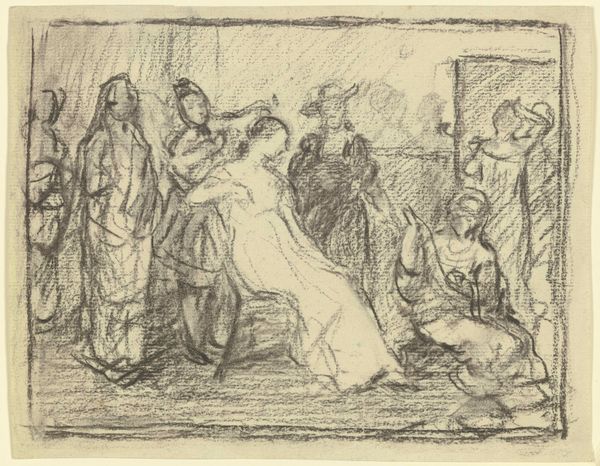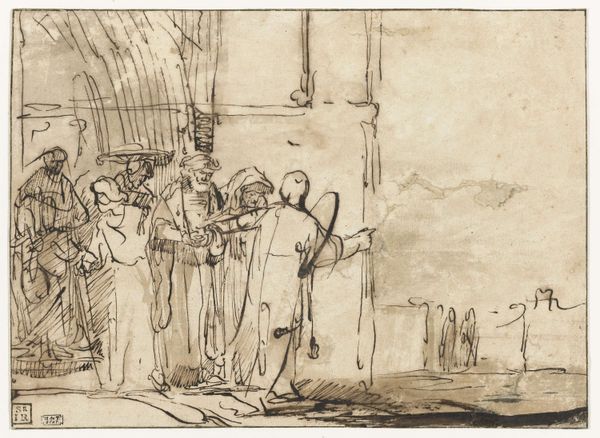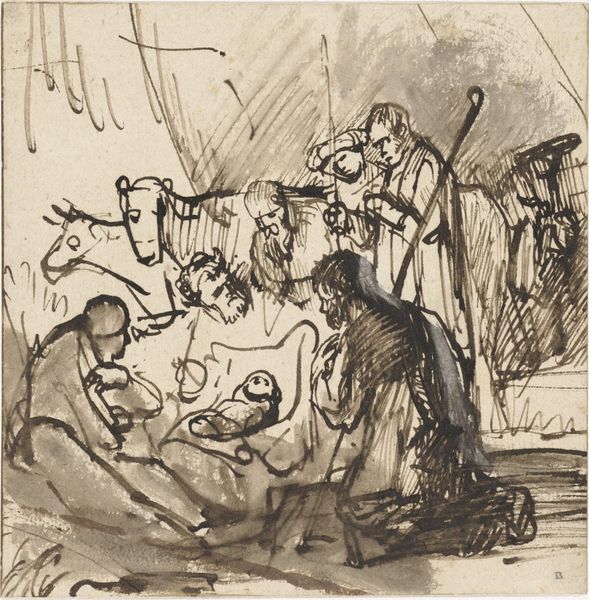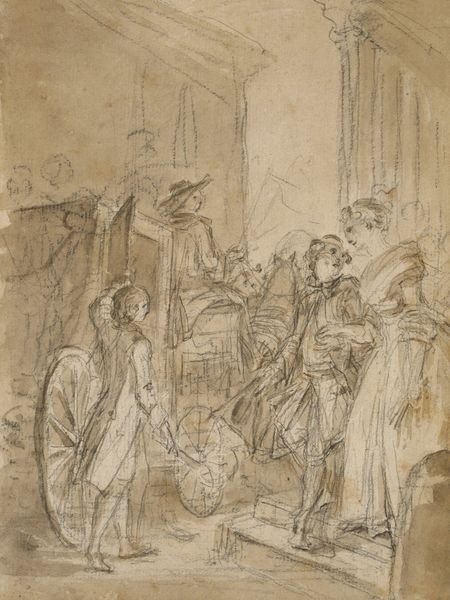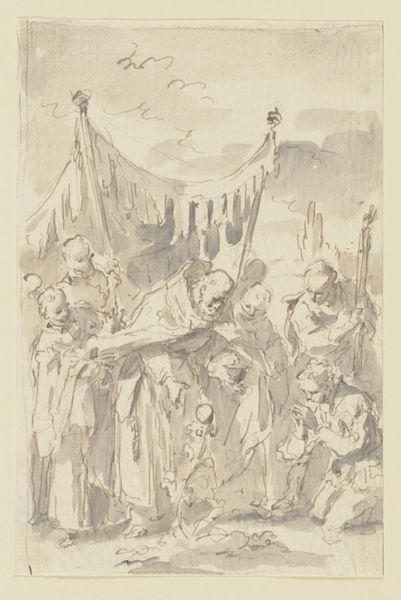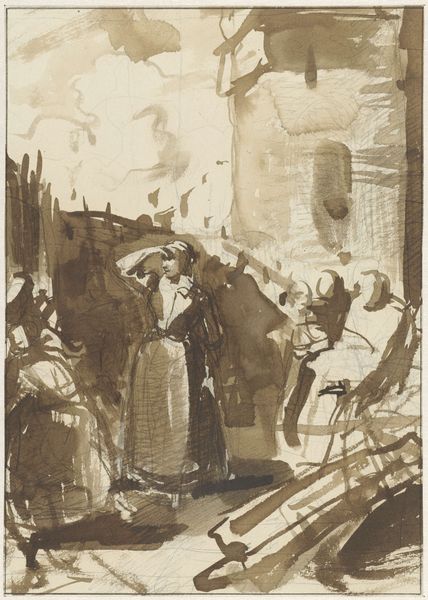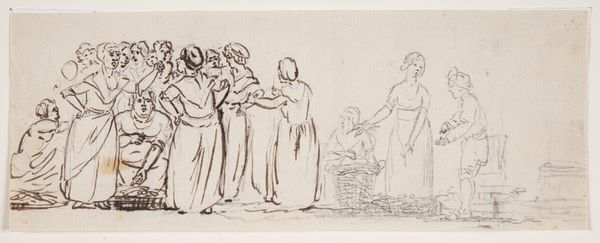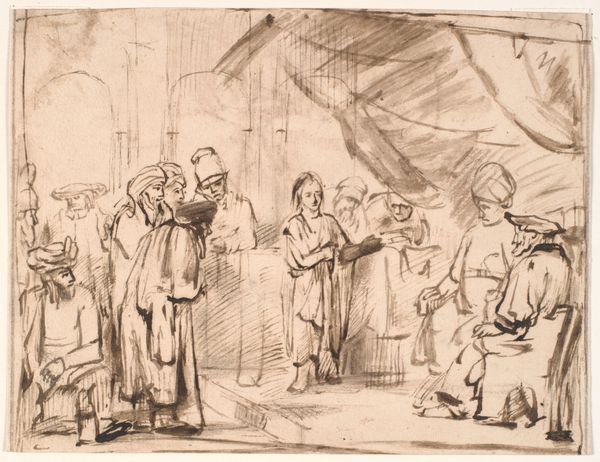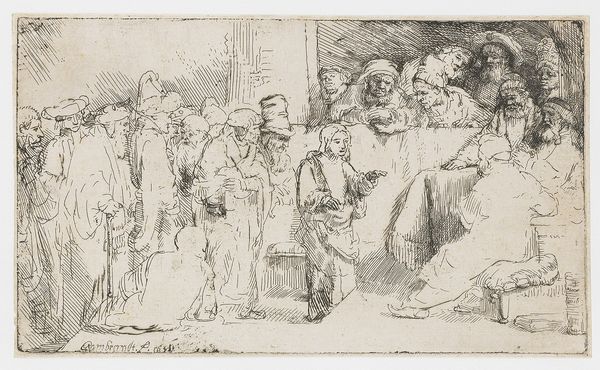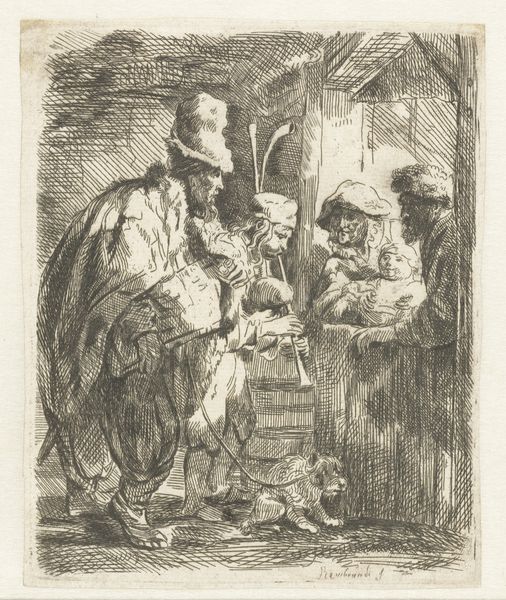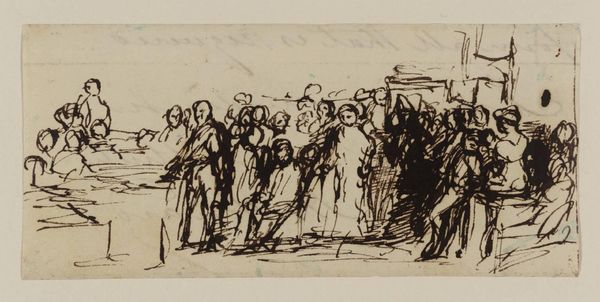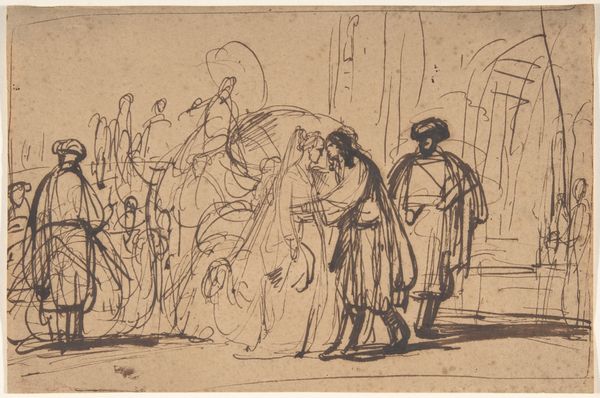
drawing, ink, pen
#
drawing
#
baroque
#
ink painting
#
pencil sketch
#
figuration
#
ink
#
pen
#
genre-painting
#
academic-art
Dimensions: height 254 mm, width 174 mm
Copyright: Rijks Museum: Open Domain
Curator: This drawing, created between 1705 and 1754, is titled "Christus te midden van Farizeeërs voor een poort" and is attributed to Jacob de Wit. De Wit employed pen and ink to create this academic baroque figuration. Editor: There's something confrontational about the arrangement; Christ seems almost cornered by the Pharisees, the use of shadow intensifying their unified, almost hostile, front. Curator: Precisely. De Wit's mastery lies in the dramatic use of light and shadow, particularly within the architectural framework and figure placement. Notice how the archway looms, directing the gaze to the central drama? The light pools selectively, accentuating Christ and the Pharisees immediately surrounding him. It's a careful construction of visual power dynamics, isn’t it? Editor: The political power dynamics are at play too. De Wit is deliberately placing Christ, an agent for radical social change, within a space, both literally and figuratively, dominated by those who uphold power. The furtive glances of the surrounding figures and Christ’s poised stance create the tension, alluding to inevitable conflict and resistance to change. Curator: One could also examine how De Wit employs line to define form. The crisp, calligraphic lines outlining the figures against the wash of ink creating the background establish a visual separation of bodies and spatial planes, effectively organizing and clarifying the narrative space. Editor: What strikes me most is how contemporary this confrontation feels, the drawing’s medium almost fading into the background to allow its challenging theme to rise to the surface. Curator: The interplay of line, shadow, and spatial arrangement lends it an air of timeless drama, while also grounding it firmly within the Baroque tradition, always seeking dynamic movement and deep emotion. Editor: It compels us to question established authority and to consider whose voices get amplified or silenced. A stark reflection for viewers from then to now.
Comments
No comments
Be the first to comment and join the conversation on the ultimate creative platform.
